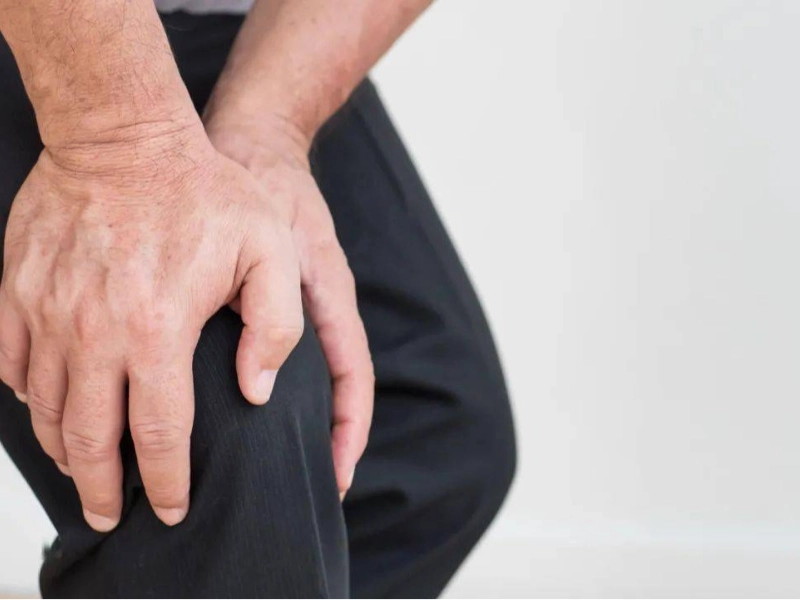Vitamin D and Osteoporosis Prevention: Protecting Bone Density

Advertisement
 3. Vitamin D sources Sunlight exposure, dietary sources, and pills are just a few of the various ways one could get vitamin D. When the skin is in sunlight—more especially, UVB radiation—the body generates vitamin D. Still, elements including geography, skin tone, and sunscreen use can influence the synthesis of vitamin D. Dietary sources include egg yolks, fortified foods (like milk and cereals), and fatty fish (such salmon and mackerel). If one finds it difficult to get enough vitamin D via diet or sunlight, supplements could be required to reach ideal levels.
4. Suggested Vitamin D Values Age and health state affect the suggested dietary allowance (RDA) for vitamin D. The RDA for most adults falls between 600 and 800 IU (international units) daily. Higher dosages may be necessary, nevertheless, especially for those with low vitamin D levels or those who run osteoporosis risk. Frequent blood testing can help ascertain whether bone health support need supplementing or if levels are sufficient.
5. The Interplay of Bone Density and Vitamin D Studies of vitamin D levels and bone density have revealed a clear relationship. Higher vitamin D levels have been linked, in studies, to better bone mineral density, therefore lowering the incidence of fractures. Apart from helping to absorb calcium, vitamin D affects bone remodeling—a process whereby old bone tissue is replaced with new tissue. Maintaining strong bones throughout of life depends on this dynamic mechanism.
3. Vitamin D sources Sunlight exposure, dietary sources, and pills are just a few of the various ways one could get vitamin D. When the skin is in sunlight—more especially, UVB radiation—the body generates vitamin D. Still, elements including geography, skin tone, and sunscreen use can influence the synthesis of vitamin D. Dietary sources include egg yolks, fortified foods (like milk and cereals), and fatty fish (such salmon and mackerel). If one finds it difficult to get enough vitamin D via diet or sunlight, supplements could be required to reach ideal levels.
4. Suggested Vitamin D Values Age and health state affect the suggested dietary allowance (RDA) for vitamin D. The RDA for most adults falls between 600 and 800 IU (international units) daily. Higher dosages may be necessary, nevertheless, especially for those with low vitamin D levels or those who run osteoporosis risk. Frequent blood testing can help ascertain whether bone health support need supplementing or if levels are sufficient.
5. The Interplay of Bone Density and Vitamin D Studies of vitamin D levels and bone density have revealed a clear relationship. Higher vitamin D levels have been linked, in studies, to better bone mineral density, therefore lowering the incidence of fractures. Apart from helping to absorb calcium, vitamin D affects bone remodeling—a process whereby old bone tissue is replaced with new tissue. Maintaining strong bones throughout of life depends on this dynamic mechanism.
 6. Factors of Lifestyle Affecting Bone Health Apart from vitamin D, various lifestyle choices can affect the state of bones and the osteoporosis susceptibility. Walking, jogging and resistance training are among the regular weight-bearing exercises that assist strengthen bones and increase balance, therefore lowering the fall risk. Maintaining bone density also depends on a balanced diet heavy in calcium, magnesium, and other vital minerals. Further preserving bone health is avoiding smoking and cutting alcohol intake.
7. Value of Frequent Visits Those who run the danger of osteoporosis must schedule frequent visits to their doctors. Dual-energy X-ray absorptiometry (DEXA) scans and other bone density examinations help to evaluate bone condition and spot early osteoporosis-related changes. These tests enable quick treatments to help preserve bone density and avoid fractures including possible supplements and lifestyle changes.
6. Factors of Lifestyle Affecting Bone Health Apart from vitamin D, various lifestyle choices can affect the state of bones and the osteoporosis susceptibility. Walking, jogging and resistance training are among the regular weight-bearing exercises that assist strengthen bones and increase balance, therefore lowering the fall risk. Maintaining bone density also depends on a balanced diet heavy in calcium, magnesium, and other vital minerals. Further preserving bone health is avoiding smoking and cutting alcohol intake.
7. Value of Frequent Visits Those who run the danger of osteoporosis must schedule frequent visits to their doctors. Dual-energy X-ray absorptiometry (DEXA) scans and other bone density examinations help to evaluate bone condition and spot early osteoporosis-related changes. These tests enable quick treatments to help preserve bone density and avoid fractures including possible supplements and lifestyle changes.
 8. Correcting Vitamin D Deficiency Should a vitamin D deficit be discovered, it is imperative to act to correct it. This could call for stepping up sun exposure, improving diet, or beginning a vitamin D supplement as advised by a doctor. Regular monitoring of vitamin D levels helps people to keep enough amounts to promote general well-being and bone health.
9.Synopsis of Vitamin D's Function in Preventing Osteoporosis A key vitamin for maintaining bone density and avoiding osteoporosis is vitamin D. Maintaining strong bones all lifetime depends on enough vitamin D levels, which help to absorb calcium and affect bone remodelling. Combining vitamin D with a good lifestyle with frequent exercise and a balanced diet will help to greatly lower the osteoporosis risk. Better bone health and quality of life as we age follow from an awareness of the value of vitamin D and proactive steps to guarantee appropriate levels.
8. Correcting Vitamin D Deficiency Should a vitamin D deficit be discovered, it is imperative to act to correct it. This could call for stepping up sun exposure, improving diet, or beginning a vitamin D supplement as advised by a doctor. Regular monitoring of vitamin D levels helps people to keep enough amounts to promote general well-being and bone health.
9.Synopsis of Vitamin D's Function in Preventing Osteoporosis A key vitamin for maintaining bone density and avoiding osteoporosis is vitamin D. Maintaining strong bones all lifetime depends on enough vitamin D levels, which help to absorb calcium and affect bone remodelling. Combining vitamin D with a good lifestyle with frequent exercise and a balanced diet will help to greatly lower the osteoporosis risk. Better bone health and quality of life as we age follow from an awareness of the value of vitamin D and proactive steps to guarantee appropriate levels.
Advertisement










